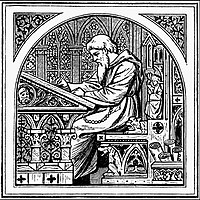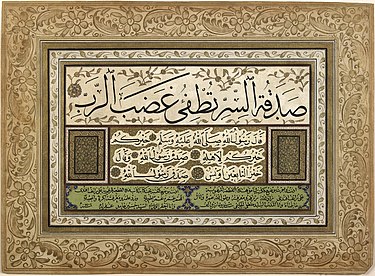
Back Portaal:Skryfstelsels Afrikaans بوابة:كتابة Arabic دەروازە:نووسین CKB Portail:Écriture French პორტალი:დამწერლობა Georgian ද්වාරය:ලේඛන කලාව Singhalese
Welcome to the writing portal
Introduction

Writing is the act of creating a persistent representation of human language. A writing system uses a set of symbols and rules to encode aspects of spoken language, such as its lexicon and syntax. However, written language may take on characteristics distinct from those of any spoken language.
Writing is a cognitive and social activity involving neuropsychological and physical processes. The outcome of this activity, also called "writing", and sometimes a "text", is a series of physically inscribed, mechanically transferred, or digitally represented symbols. The interpreter or activator of a text is called a "reader".
In general, writing systems do not constitute languages in and of themselves, but rather a means of encoding language such that it can be read by others across time and space. While not all languages use a writing system, those that do can complement and extend the capacities of spoken language by creating durable forms of language that can be transmitted across space (e.g. written correspondence) and stored over time (e.g. libraries or other public records). Writing can also have knowledge-transforming effects, since it allows humans to externalize their thinking in forms that are easier to reflect on, elaborate on, reconsider, and revise. (Full article...)
Selected article
Islamic calligraphy is the art of writing, and by extension, of bookmaking. This art has most often employed the Arabic script, throughout many languages. Calligraphy is especially revered among Islamic arts since it was the primary means for the preservation of the Qur'an.
Throughout Islamic history, the work of calligraphers was collected and appreciated. Consideration of figurative art as idolatrous led to calligraphy and abstract figures becoming the main methods of artistic expression in Islamic cultures.
Arabic, Persian and Ottoman Turkish calligraphy is associated with geometric Islamic art (the Arabesque) on the walls and ceilings of mosques as well as on the page. Contemporary artists in the Islamic world draw on the heritage of calligraphy to use calligraphic inscriptions or abstractions in their work. (Full article...)
Selected picture
Selected biography
Rudolf Koch (November 20, 1876 - April 9, 1934) was a leading German calligrapher, typographic artist and teacher, born in Nuremberg. He was primarily a calligrapher with the Gebr. Klingspor foundry. He created several fonts, both in fraktur and normal formats. Fritz Kredel studied under Koch.
Koch wrote a book of 493 old-world symbols, monograms and runes entitled The Book of Signs which was published in 1955 by Dover Publications, INC. and which belongs to the Dover Pictorial Archive Series.
Some of Koch's work can be seen today at the Klingspor Museum in Offenbach.
Some typefaces developed by Koch include:
- Neuland (1923)
- Kabel (1927)
- Zeppelin (1929)
- Prisma (1931)
- Holla (1932)
- Marathon (1938) (Full article...)
Did you know...
Categories

Writing • Calligraphy • Penmanship • Writing implements • Inks • Alphabetic writing systems • Abjad • Abugida • Kanji • Logographic writing systems • Writing systems • Cyrillic alphabets • Hellenic scripts • Script typefaces
Major topics
• Calligraphy •
Western calligraphy • Islamic calligraphy • Indian calligraphy • Chinese calligraphy • Korean calligraphy • Japanese calligraphy • Persian calligraphy • Manuscript
• Writing instruments •
Pen • Ink brushes • Inks • Ink stone • Qalam • Quill • Dip pen • Nib • Paper • Writing slate • Pencil • Typewriter • Word processor • Dry erase marker • Touchscreen
Things you can do
 |
Here are some tasks awaiting attention:
|
WikiProjects
Related portals
Associated Wikimedia
The following Wikimedia Foundation sister projects provide more on this subject:
-
Commons
Free media repository -
Wikibooks
Free textbooks and manuals -
Wikidata
Free knowledge base -
Wikinews
Free-content news -
Wikiquote
Collection of quotations -
Wikisource
Free-content library -
Wikispecies
Directory of species -
Wikiversity
Free learning tools -
Wikivoyage
Free travel guide -
Wiktionary
Dictionary and thesaurus
References
© MMXXIII Rich X Search. We shall prevail. All rights reserved. Rich X Search












